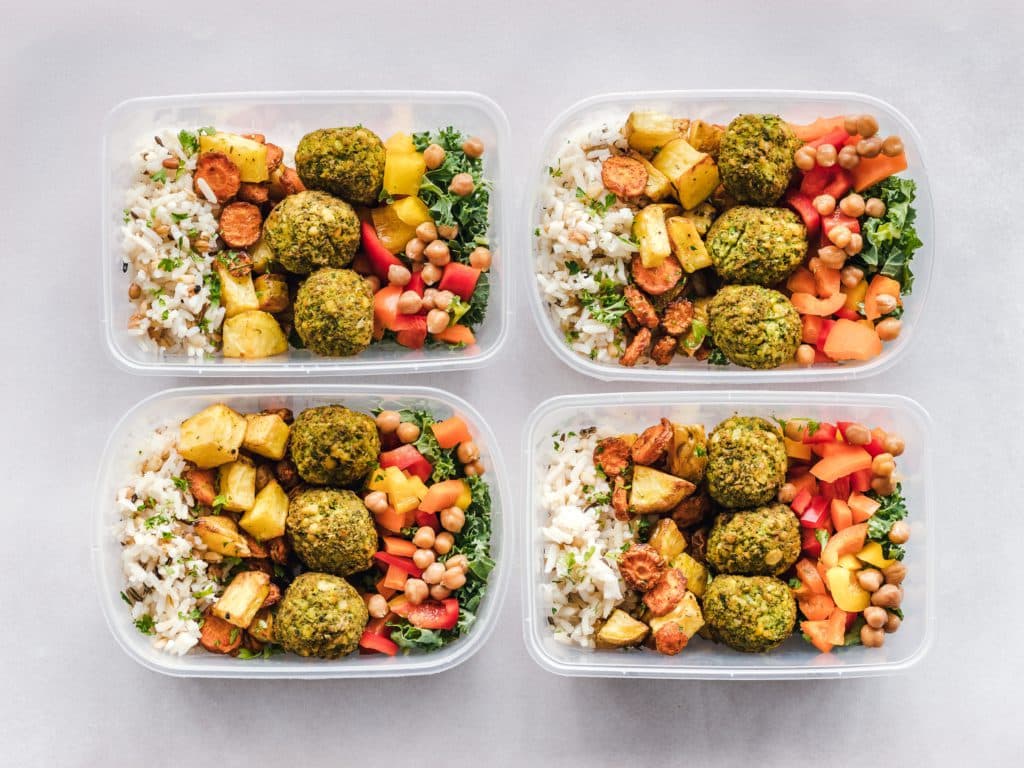
INTRO
What is a Protein Challenge?

Nearly every cell in the human body needs protein to function properly. This means consuming adequate amounts of protein can help to promote muscle growth, repair damaged tissues, and prevent muscle wasting.
Additionally, protein is more satiating than carbohydrates and fats, which means that it can help to keep you feeling full and satisfied after a meal.
Starting a protein challenge and inviting a friend to join you is a great way to stay on track and stay motivated to eat quality protein for every cell in your body.
Facts About Protein
Here are some of the most important health benefits of eating protein.
Building and repairing tissues
Protein is a major component of the body’s tissues, and it is necessary for the structure, function, and regulation of the body’s tissues and organs. Consuming enough protein can help the body to repair and regenerate tissues, including skin, muscles, and bones.

Maintaining muscle mass
Protein is an important component of muscle tissue, and consuming enough protein is important for maintaining muscle mass, especially as we age.
Supporting healthy bodyweight
High-protein diets may be effective for weight loss, as protein can help to increase feelings of fullness and reduce appetite.
Regulating blood sugar
Protein can help to regulate blood sugar levels by slowing down the absorption of carbohydrates into the bloodstream.
Boosting immune function
Protein is necessary for the production of antibodies and other immune system components, and consuming enough protein can help to support immune function.
High Quality Protein
High quality protein is generally considered to be high in the essential amino acids that the body needs but cannot produce on its own and must be obtained through the diet. There are many different sources of protein, and the quality of protein can vary depending on the source.
Animal-based protein sources found in meat, poultry, fish, eggs, and dairy products, are generally considered to be high-quality protein sources because they are complete proteins, meaning they contain all of the essential amino acids.
Plant-based protein sources, such as beans, legumes, nuts, and seeds, are generally considered to be lower-quality protein sources because they are incomplete proteins, meaning they do not contain all of the essential amino acids.
When consuming animal or plant based proteins, it’s also important to pay close attention to the source:
Does the meat contain antibiotics or hormones? Was the animal fed pesticide-sprayed grains or organic grass? Is the plant protein organic?
Optimizing Your Protein Intake

It’s important to consume a variety of high-quality protein sources in order to ensure that the body has sufficient amounts of all the essential amino acids.
This is especially important for people who follow plant-based diets, as they may need to pay more attention to the quality and variety of their protein sources in order to meet their protein needs.
There are several things to consider when starting your protein challenge.
Variety. Animal-based protein sources, such as meat, poultry, fish, eggs, and dairy products, are considered to be high-quality, complete proteins, while plant-based protein sources, such as beans, legumes, nuts, and seeds, are generally considered to be lower-quality, incomplete proteins.
Quantity. It is important to consume enough protein to meet your body’s needs. The recommended daily intake of protein varies depending on factors such as age, sex, weight, and activity level.
Timing. Consuming protein at regular intervals throughout the day can help to ensure that your body has a constant supply of amino acids, which can be helpful for building and repairing tissues.
Pairing. Combining plant-based protein sources with complementary protein sources can help to improve the quality of the protein you are consuming. For example, beans and rice or tofu and quinoa are both good combinations of plant-based and complementary proteins.
Quality. Choosing high-quality protein sources, such as lean meats, poultry, fish, eggs, and dairy products, can help to ensure that you are getting the most nutrient-dense forms of protein.
Overall, it’s important to focus on incorporating a variety of high-quality protein sources into your diet in order to support your body’s needs during your protein challenge.

How to Eat More Protein
There are many different ways to incorporate quality protein into your protein challenge. Here are a few ideas:
Lean meats
Eating lean meats, such as chicken, turkey, or lean beef, as a main dish or in sandwiches, salads, or wraps.
Nuts & seeds
Adding nuts, seeds, and nut butters to your diet as a snack or as an ingredient in recipes (such as smoothies or baked goods).
Beans & legumes
Including beans, legumes, and lentils in your diet as a side dish, in salads, or as an ingredient in soups, stews, or chili.
Eggs
Including eggs in your diet, either as a main dish (such as scrambled eggs or an omelet) or as an ingredient in recipes (such as quiches or frittatas).
Seafood
Eating fish, such as salmon, tuna, or cod, as a main dish or in salads or sandwiches.
Protein powder
Using plant-based protein powders, such as pea protein or soy protein, as a supplement in smoothies or baked goods.
How to Calculate My Protein Requirements

The recommended daily allowance (RDA) for protein is 0.8 grams per kilogram of body weight per day for adults. This means that for an average sedentary adult weighing 70 kilograms (154 pounds), the recommended protein intake would be about 56 grams per day.
However, the RDA is the recommended amount to prevent deficiency. Some health experts, like Gabriel Lyon, recommend aiming for 1.2-1.6g per kg of body weight. Peter Attia even suggests 2g of protein per kg of body weight is what we should be striving towards to maintain optimal health.
Individuals who are very physically active or are living with a chronic illness will require more protein to support the maintenance of healthy body function, recovery and muscle growth. If you fall under either category, aim for the higher end of these recommendations (1.4-2g of protein per kilo of body weight).
Use this formula to calculate your protein requirements:
- Divide your weight in pounds by 20 to find your weight in kilograms.
- Multiply your weight in kilograms by 0.8 (RDI guidelines).
How to Start a Protein Challenge
1
Plan ahead
Make a grocery list and include protein-rich foods such as chicken, fish, tofu, beans, and nuts.
2
Keep protein-rich snacks on hand
Stock your pantry and office with healthy snack options like nuts, hard-boiled eggs, and protein bars.
3
Don't forget about breakfast
Start your day off with a protein-rich breakfast, such as eggs, Greek yogurt, or oatmeal with nuts and seeds.
4
Make protein the centerpiece of your meals
When planning meals, make protein the main event rather than an afterthought.
5
Vary your protein sources
Mix it up by including a variety of protein sources in your diet, such as plant-based proteins like beans and tofu, as well as animal-based proteins like chicken and fish.
6
Don't skimp on portion size
Be sure to include enough protein in your meals to meet your daily needs.
Can't Eat Enough Protein?

There are several common setbacks that can make it difficult to increase your protein intake. Here are a few strategies you can try to overcome these setbacks in your protein challenge.

Lack of time. Meal prep can be a great way to ensure you have protein-rich meals and snacks on hand when you’re short on time. Consider preparing a batch of hard-boiled eggs, grilling chicken breasts, or cooking a pot of beans on the weekend to have on hand for quick meals during the week.
Picky eating. If you don’t enjoy the taste of certain protein-rich foods, try adding sauces or spices to make them more appealing, or incorporate them into dishes where they are less noticeable. For example, you can add nuts or seeds to a smoothie, or use tofu as a replacement for meat in a stir-fry.
Budget constraints. While some protein-rich foods can be more expensive, there are also many budget-friendly options available. For example, beans and eggs are relatively inexpensive sources of protein. You can also save money by purchasing larger quantities of protein-rich foods and freezing them for later use.
Lack of appetite. If you’re not hungry, it can be difficult to increase your protein intake. In this case, try snacking on protein-rich foods throughout the day to help you meet your protein needs. You can also try adding protein-rich foods to meals and snacks to help boost your intake.
By being proactive and finding solutions to these common setbacks, you can increase your protein intake and build a habit of eating more protein.
Protein FAQ's
The timing of when to drink protein shakes can depend on several factors, including your individual fitness goals, daily routine, and dietary preferences. Here are some general guidelines:
Post-workout. Many people choose to drink a protein shake after a workout, as it can help replenish muscle glycogen, promote muscle recovery, and support muscle growth. Aim to consume your protein shake within 30-60 minutes after your workout for optimal results.
Meal replacement. Protein shakes can also be used as a convenient and quick meal replacement option, especially when you’re on the go or don’t have time for a full meal. They can provide a good source of protein, healthy fats, and carbohydrates, depending on the ingredients in the shake.
Snack. Protein shakes can also be consumed as a healthy snack between meals to help keep you full and satisfied. This can be especially helpful if you’re trying to manage your hunger levels or maintain a balanced diet.
Before bedtime. Some people also choose to drink a protein shake before bedtime as a way to provide their muscles with a slow-release source of protein during the night. This can help support muscle recovery and prevent muscle breakdown while you sleep.
Based on individual needs. Ultimately, the best time to drink a protein shake depends on your individual needs, preferences, and schedule. Some people may prefer to drink a protein shake in the morning to jump start their day, while others may prefer it as a midday pick-me-up. It’s important to listen to your body and find what works best for you.
The number of protein shakes you should have in a day depends on various factors such as your protein requirements, physical activity level, and dietary habits. In general, most people can meet their protein needs through a balanced diet, and protein shakes are not necessary.
If you do choose to consume protein shakes, it is recommended that you limit your intake to one or two per day. Protein shakes shouldn’t be used as a complete replacement for whole foods, since they lack the other essential nutrients found in a balanced diet.
Excessive protein intake can also be harmful to your health, particularly if you have underlying kidney or liver issues. It’s best to consult with a healthcare professional or a registered dietitian to determine the appropriate amount of protein you need and whether protein shakes are necessary for you.
The amount of protein that your body can absorb depends on various factors including your age, weight, sex, overall health, physical activity level, and the quality of the protein you consume.
Research suggests that the body can absorb and utilize approximately 20-30 grams of protein per meal. Consuming more than this amount in a single meal may not result in additional muscle protein synthesis. However, it’s important to note that the timing and distribution of protein intake throughout the day can also influence muscle protein synthesis.
The quality of the protein you consume is also an important factor in determining absorption. Proteins from animal sources, such as meat, dairy, and eggs, are considered to be high-quality proteins as they contain all essential amino acids in the right proportions. Plant-based protein sources, such as legumes, nuts, and seeds, may have lower protein quality and digestibility but can still contribute to meeting your daily protein needs, especially when consumed in combination (i.e. legumes, nuts, and rice in one meal).
Consuming too much protein can have negative effects on your health, particularly if it exceeds your body’s needs. Excessive protein intake can put a strain on your kidneys and liver, since these organs are responsible for filtering and processing excess nitrogen from protein breakdown. Long-term overconsumption of protein can increase your risk of kidney disease, liver problems, and osteoporosis.
Consuming high amounts of protein can also lead to an increase in calories, which can result in weight gain if not balanced with regular physical activity. Consuming high amounts of protein from animal sources can also lead to an increased intake of saturated fat, which can increase the risk of heart disease.
Keep in mind that not all protein sources are created equal. Choosing high-quality protein sources, such as lean meats, fish, and plant-based proteins like beans, lentils, and nuts, can help you meet your protein needs without exceeding them.
Power-up Your Protein
There are a number of tools that you can use to help to support your protein challenge.
Smartphone apps. There are many apps available (including MasterHealth) that can help you plan meals and track your protein intake, set goals and receive reminders. Many apps include features such as a food diary, a database of nutritional information for different foods.
Protein powders and supplements. If you have trouble getting enough protein from your diet, protein powders and supplements can be a convenient way to increase your intake. The powders come in a variety of flavors and can be added to smoothies, oatmeal, and other dishes to boost the protein content.
Social media and online communities. There are many online communities (like MasterHealth) and social media groups dedicated to health and nutrition, where you can connect with others who are also working to increase their protein intake. The MasterHealth challenges can provide a sense of accountability and support, and can be a great source of inspiration.
Meal delivery services. There are many meal delivery services that offer protein-rich meals and meal plans. These can be a convenient option if you don’t have the time or energy to plan and prepare meals yourself.
Start a group protein challenge today!
Help your clients stay accountable to hitting this macro goal.










